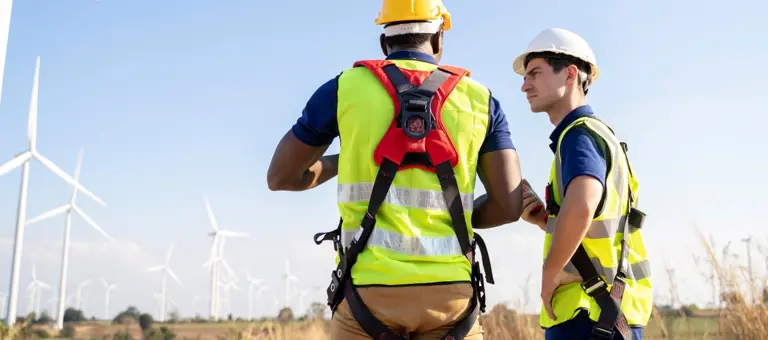
The wind dividend: how wind energy pays back to Northern Ireland
5 April 2019
In this study, Baringa has analysed the financial impact for end consumers of the deployment of wind generation in Northern Ireland over the period 2000-2020. We have used our advanced in-house models of the all-island electricity market to calculate how the costs and benefits for end consumers would have differed if no wind farms had been built. We have also calculated the impact of wind farms on carbon emissions and fossil fuel consumption.
Key findings – what have we learned?
- Our analysis indicates that the deployment of 1.4 GW of wind generation capacity in Northern Ireland between 2000 and 2020 will result in a total net benefit to consumers, over 20 years, of £0.1bn (£135 million to be exact), which equates to a net benefit of about £4 per person per year.
- This total net benefit arises as the gross costs of £0.7bn are outweighed by a gross benefit of £0.8bn. These benefits consist of wind-driven reductions in wholesale power prices, and avoidance of EU non-compliance costs.
Aside from the financial costs and benefits, we calculate that the deployment of wind generation in
Northern Ireland avoids:
- 9 million tonnes of power sector CO2 emissions. The total carbon emissions from energy supply in Northern Ireland in 2016 was 4.0 Mt, so a saving of 9 Mt is equivalent to over 2 years of total carbon emissions in the energy sector.
- 72 TWh of fossil fuel consumption at a saving of £1.0bn
We explored the benefits offered to consumers in Ireland in our parallel report, Wind for a Euro. Read more on our Irish study here.
For more information on the contents of the report or how Baringa can help your organisation, please contact Mark Turner and Alec Granville-Willett.
Related Insights

Investing in uncertainty: European power market outlook 2025
Our latest outlook points to a more uncertain energy transition, shaped by political and economic volatility across Europe in the form of Trade Wars, Populism and Remilitarisation.
Read more
REMA and investing in GB power market under uncertainty
Learn about the opportunities and challenges of investing in the GB power market under uncertainty and how Baringa can help
Read more
Three ways in which increased volatility and flexibility are reshaping Spain’s energy market
Spain's energy market faces profound change due to curtailment, negative prices, and a recent blackout, discussed at our roundtable event.
Read more
Turbocharging the benefits of Great Britain's emerging home energy efficiency sector
Improving the energy efficiency of residential housing stock to an Energy Performance Certificate (EPC) rating of C or above is not just an environmental necessity but also a powerful economic strategy that can deliver multifaceted benefits for society.
Read moreIs digital and AI delivering what your business needs?
Digital and AI can solve your toughest challenges and elevate your business performance. But success isn’t always straightforward. Where can you unlock opportunity? And what does it take to set the foundation for lasting success?